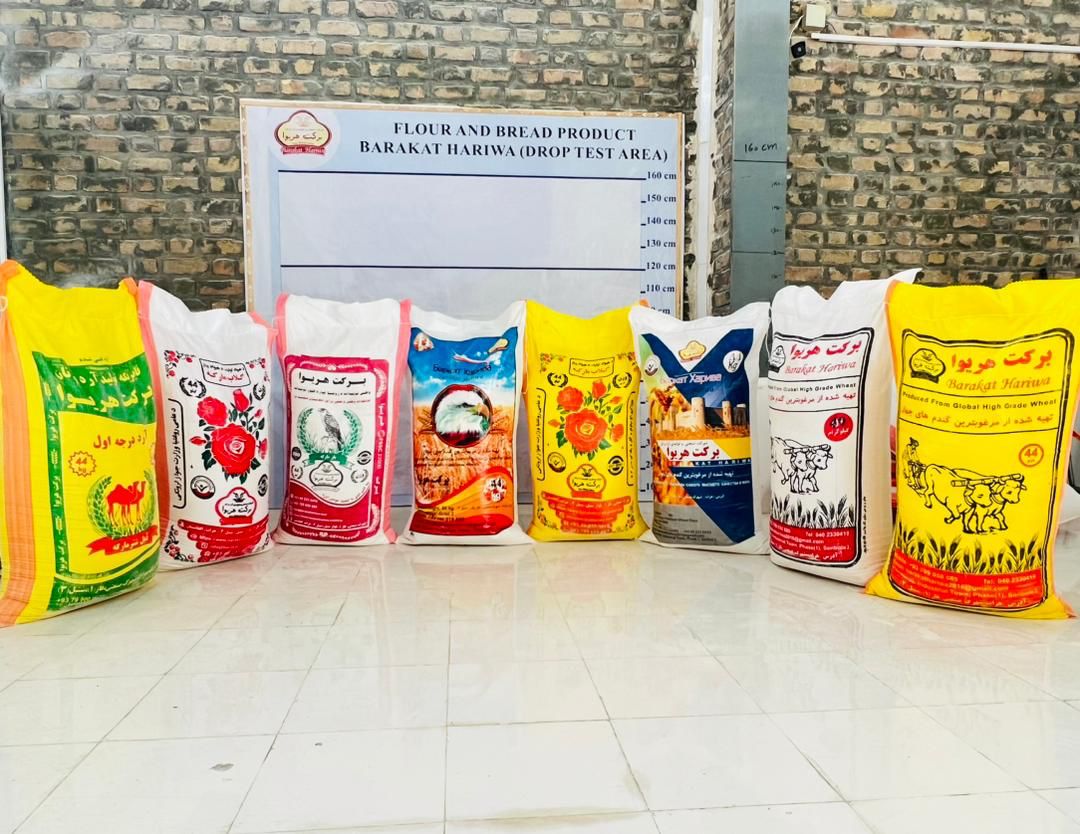Flour Milling Operation
At FLOUR AND BREAD PRODUCT BARAKAT HARIWA's mill, producing high-quality wheat flour means paying close attention to details at every step of the milling process. Here's an overview of the key aspects of a modern flour milling operation.
Grain Receiving and Storage
At the time of procurement, the grain generally comprises impurities. Therefore, foreign contaminants and pollutants that infiltrated the grain during storage, transportation, or harvesting must be eliminated prior to processing. This meticulous procedure directly influences the quality of the flour and grains that are generated.
The milling process involves the removal of layers of endosperm from the outer casing and the bran. We separate this process so that we can control the most critical aspects of the milling process, such as particle size, starch damage, and flour streaming. Our state-of-the-art milling facility and process enable us to produce flour of the highest quality and consistency.
Wheat is received at our mill by trucks year-round, with the July wheat harvest being our busiest. Most of the local wheat comes from the western part of Afghanistan. This includes grain that comes locally from Herat, Helmand, and Badghis provinces. Our imported wheat is sourced from the northern shores of Kazakhstan and sometimes Turkmenistan. Each incoming load of grain in each truck is individually sampled and quality tested for moisture, test weight, foreign material, insect infestation, and sprout damage. Any shipment not meeting our quality standards is immediately rejected.
After testing is completed and the quality is acceptable, the wheat is then unloaded in one of our three-grain unloading pits. During harvest time and the winter season, any wet wheat (moisture exceeding 13.5%) is transferred to our continuous flow gas dryer, where it is dried to less than 13.5% moisture for long-term storage. Wheat is then transferred to our concrete silos, where it is disinfected and then cooled to maintain quality while in long-term storage.
OUR MILLING PROCESS
Cleaning and Conditioning: The process begins with cleaning and conditioning the wheat or grains to remove impurities and prepare them for milling. Advanced cleaning equipment, such as vibrating screens, de-stoners, and magnetic separators, ensures that only the purest grains are used.
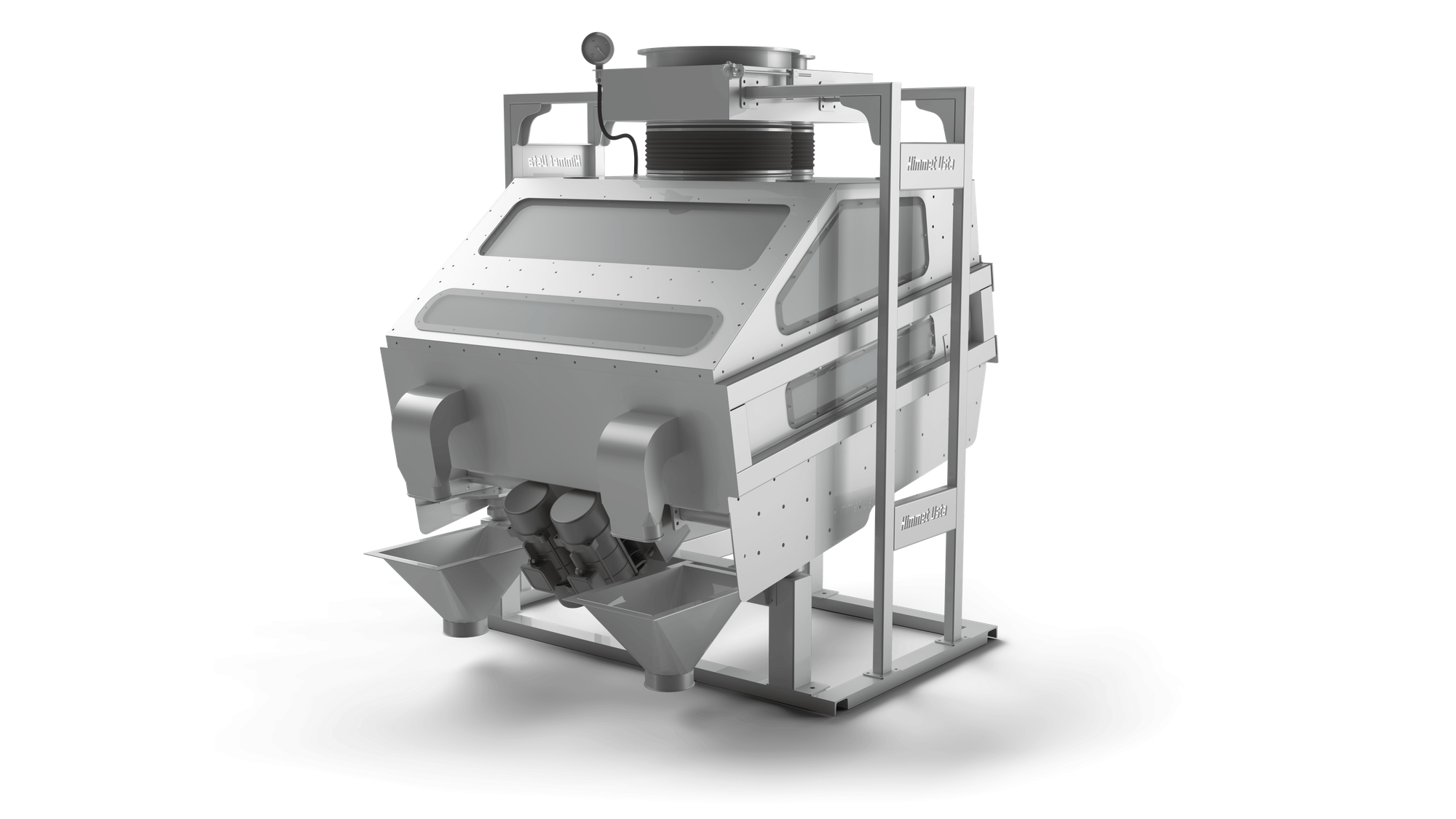
Milling: Next, the cleaned grains are milled to produce flour. Modern flour mills typically use roller mills, stone mills, or a combination of both, to grind the grains into flour. These milling machines are equipped with advanced automation and monitoring systems to optimize grinding efficiency and ensure consistent flour quality.
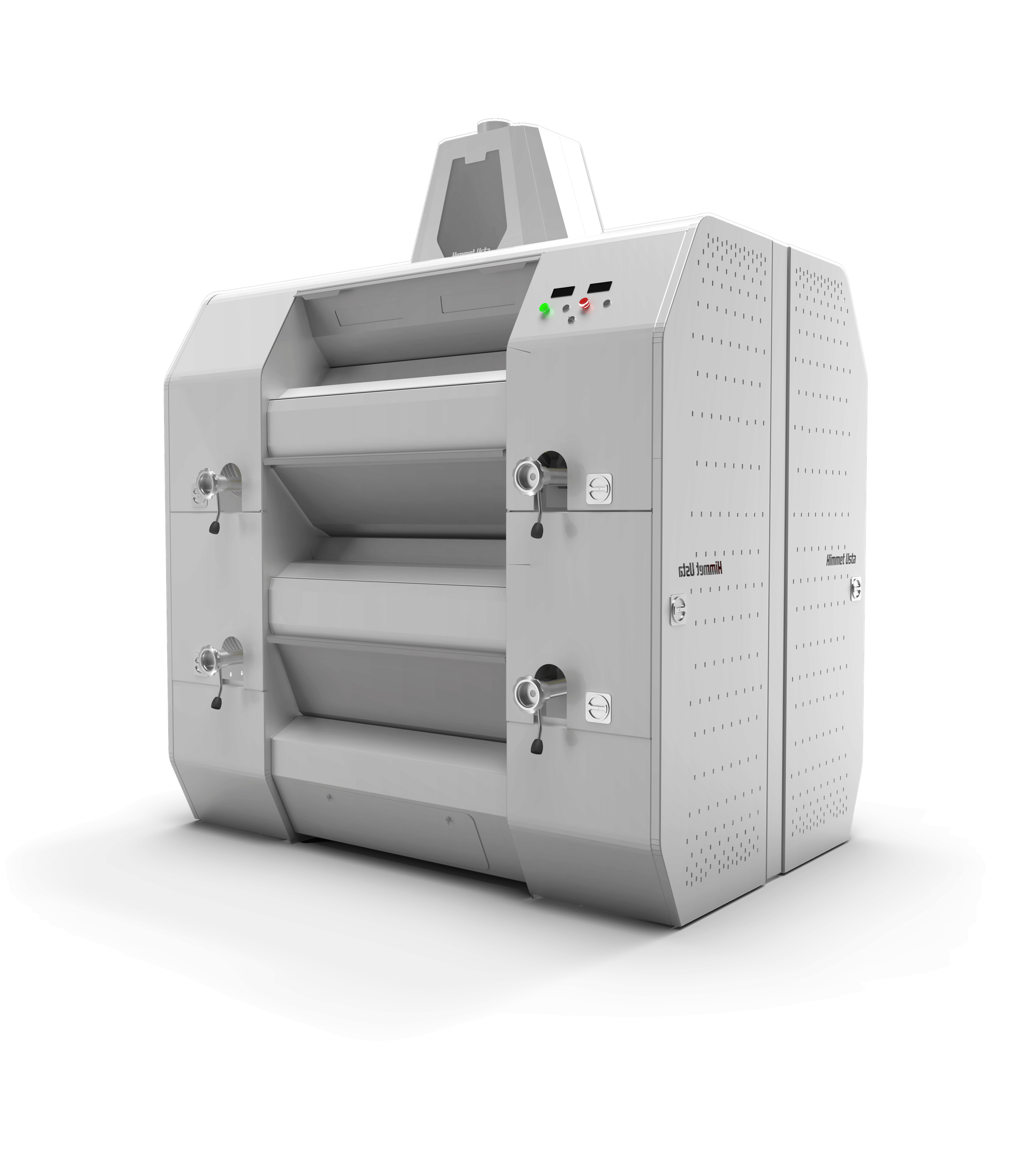
Sifting and Purifying: After milling, the flour undergoes sifting and purifying processes to remove any remaining bran or impurities and achieve the desired fineness. High-tech sifters, sieves, and purifiers use precise mesh sizes, airflow control, and density separation techniques to refine the flour texture and purity.
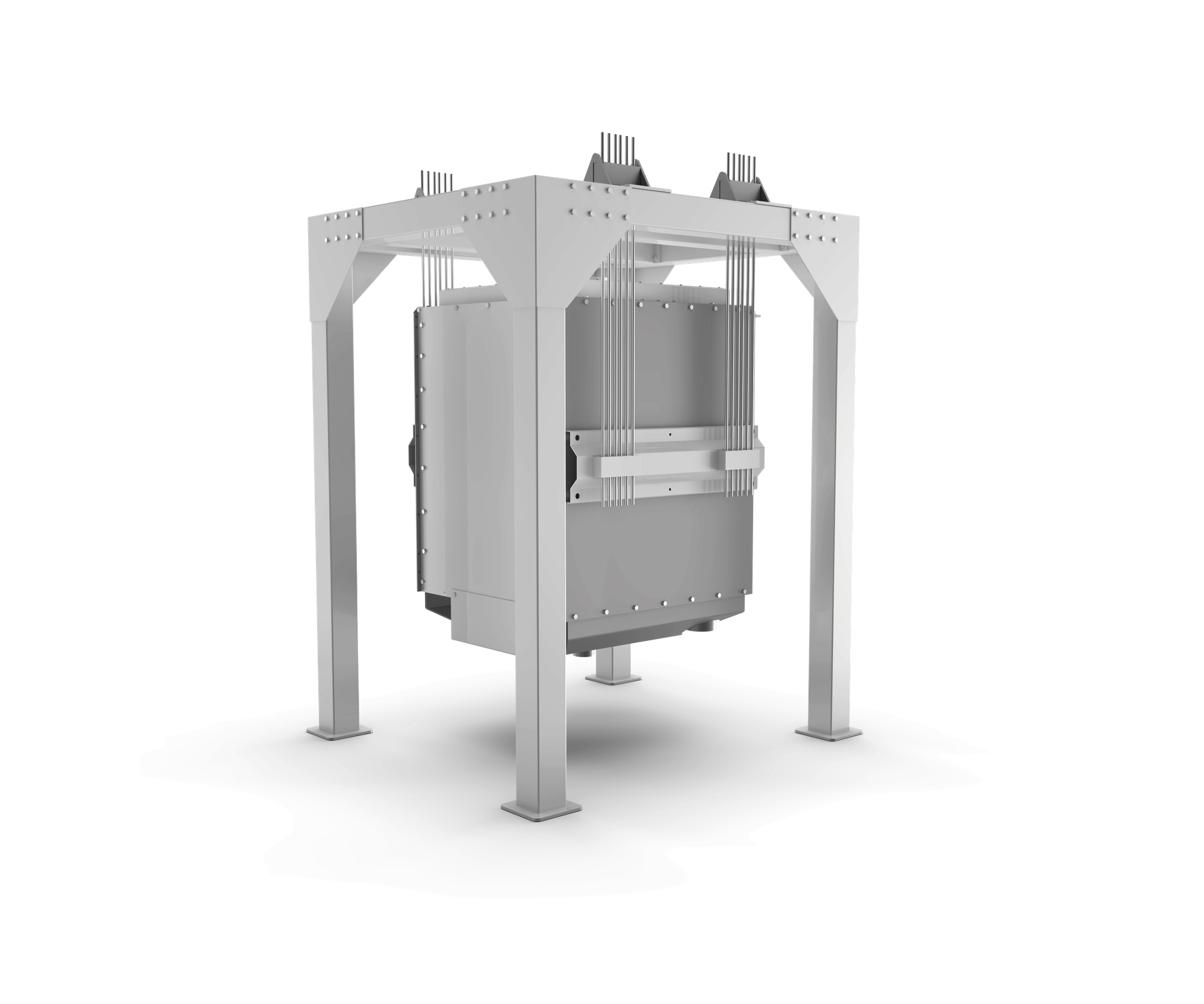
Quality Control: Quality control is paramount in modern flour milling operations. Various quality control measures, such as moisture meters, gluten analyzers, and particle size analyzers, are employed to monitor and control key quality parameters throughout the milling process. Advanced automation and control systems ensure that quality standards are consistently met.
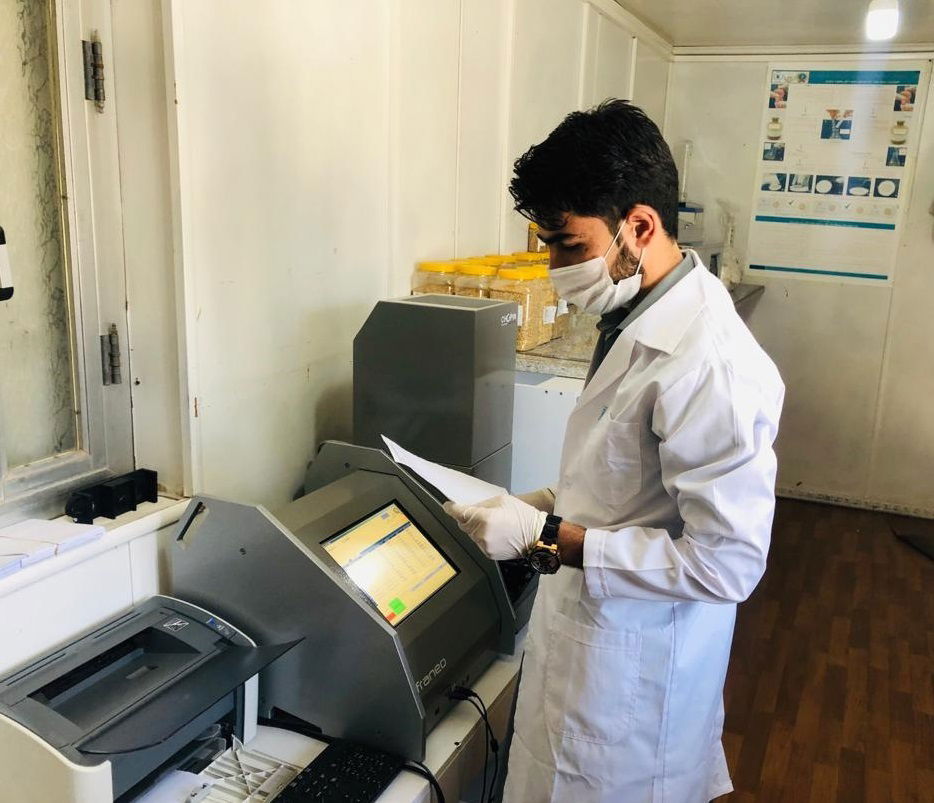
Packaging and Distribution: Once milled and sifted, the flour is packaged for distribution. Automated packaging equipment, including bagging machines and conveyor systems, ensures accurate filling and sealing of bags, maintaining the freshness and purity of the flour. Quality control checks are performed during packaging to detect any defects or contaminants.
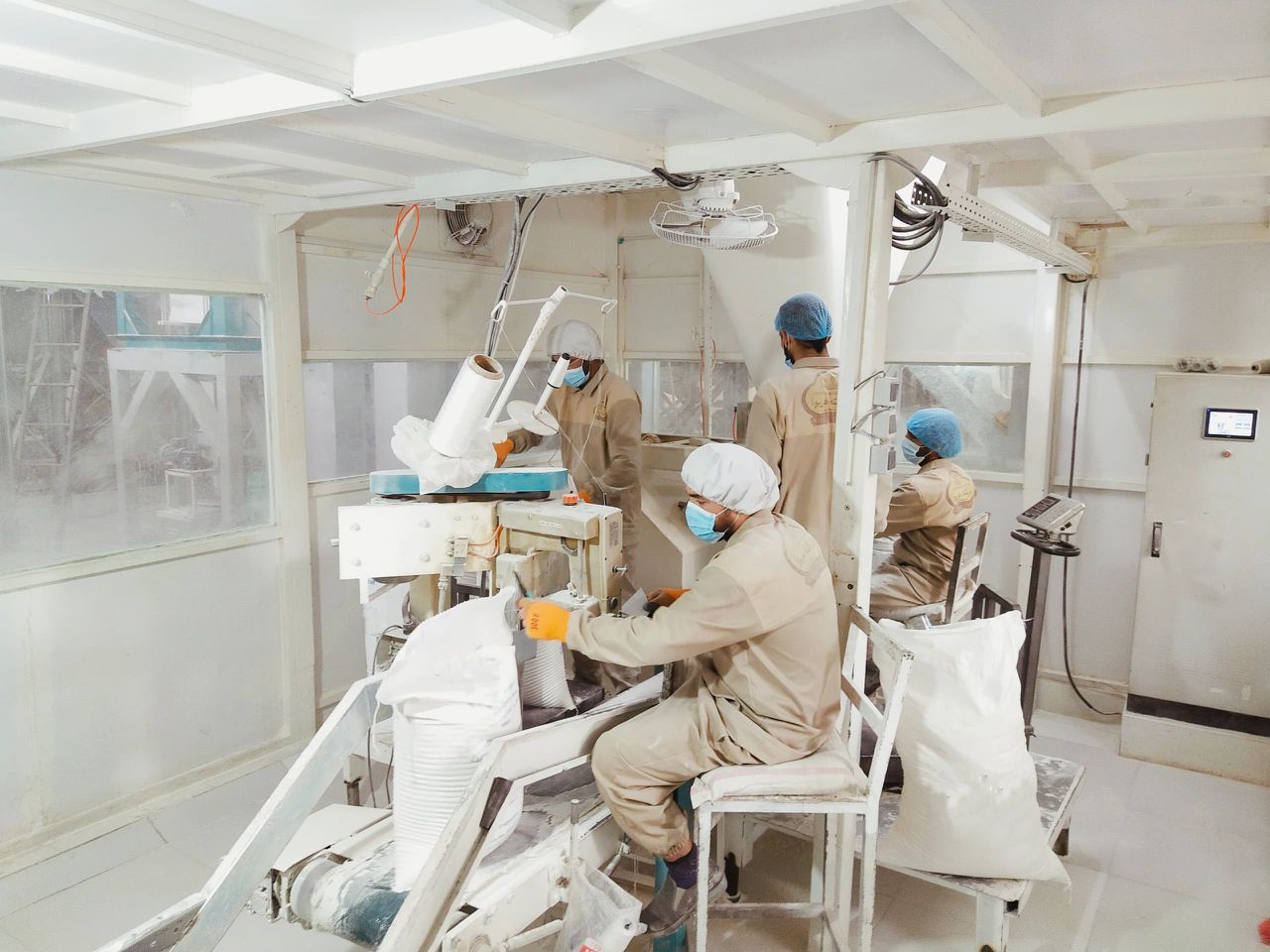
Automation and Technology: Modern flour mills are highly automated, with advanced technology and control systems managing the entire milling process. From adjusting machine settings to monitoring quality parameters in real-time, automation improves efficiency, consistency, and reliability in flour production.
Sustainability and Environmental Considerations: Many modern flour milling operations prioritize sustainability and environmental stewardship. Energy-efficient machinery, waste reduction measures, and recycling initiatives are implemented to minimize environmental impact and ensure sustainable operations.
Overall, modern flour milling operations combine advanced technology, rigorous quality control, and sustainability practices to produce high-quality flour products efficiently and responsibly
Finished Flour
Finished flour is continuously collected from the sifters during the milling process. All flour is fortified and then blended before entering the re-bolt sifter, where the finished flour is given one final sifting to eliminate any impurities. Once finished, the flour is automatically weighed on its way to packing.
Throughout the day, several finished flour samples are drawn off the mill for testing in our house laboratory. Every sample is visually checked and then tested for protein, gluten, zeleny, water absorption, moisture, and ash content.
Finally, finished flour is loaded into one of our 25-ton trucks and weighed on the weigh scanner for on-time delivery to the customer at any time, day or night.